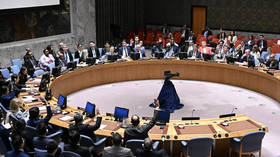India throws the oil tanker industry a lifeline

India’s growing demand for oil and its plans to rely less on crude from its biggest supply region, the Middle East, is set to support demand for oil tankers traveling on longer routes to the world’s third-largest oil importer.
India, which imports more than 80% of the crude oil it consumes, has been hinting in recent years that it needs to look beyond the traditional Middle East suppliers for oil. As fortunate as it has been for the country to have some of the world’s biggest oil exporters so close to its shores, India is now looking to boost its energy security by having more choices when it comes to oil suppliers. It's also looking to pay less for oil from beyond the Arab Gulf, arbitrage and price spreads permitting.
India’s diversification drive has become more urgent this year. The recent oil price rally and the OPEC+ decision to keep markets tight through April has angered the world’s third-biggest oil importer as its import costs soared and domestic fuel prices hit record highs.
Also on rt.com India to cut Saudi oil imports amid escalating standoff over output & diversification driveIndia’s more aggressive plans to diversify oil purchases away from the Middle East would likely support the global oil tanker market, both in the short and the long term, analysts and shipbrokers say.
With Indian crude oil demand set to grow in the foreseeable future, possibly becoming the key driver of global growth, the more diversified India’s imports will be, and the more ton-mileage demand for tankers they would generate.
Oil Tanker Market From Boom To Bust
The tanker market, for its part, went from boom to bust in the year since the pandemic started.
This time last year, tanker rates were surging through the roof as the biggest oil exporter in the world, Saudi Arabia, made good on its promise to flood the market with oil when it broke up— briefly—its OPEC+ pact with Russia. The Saudis rushed to book supertankers, on top of their own fleet, to send record high volumes of crude oil to the most transparent market, the United States, and its traditional destinations in Asia.
The collapse in oil prices and demand flipped the oil futures curve into a deep contango, with the state of the market signaling a glut and rendering the act of storing oil for future sales profitable. This created an additional tanker run from traders and the trading arms of oil majors who were looking to charter vessels to use as floating storage.
In just one week in March 2020, the daily rates for very large crude carriers (VLCCs) skyrocketed from the low $30,000s before the Saudi-Russian break-up to $200,000-$300,000 a day, depending on the destination of the oil cargo.
Also on rt.com Russia looking to bolster oil supplies to India for decades aheadOne year later, in March 2021, VLCCs are lost money on some routes, Clarksons Research estimates, as carried by The Wall Street Journal.
And it’s not just the OPEC+ cuts and the extra Saudi cut that are limiting the availability of crude for shipping. It’s also a tanker glut on the market after most vessels used for floating storage have rejoined the tanker fleet to ship oil. The tight oil market and expectations of accelerating global oil demand in the second half of the year have removed the incentive for traders to store oil for future sales because in the current market backwardation, prompt prices are higher than those further out in time.
The surprise decision of OPEC+ not to boost production next month is further weighing on the tanker market, and oil tanker owners and shipbrokers are set to suffer longer than expected from the massive OPEC+ production cuts.
Eventually, this oil tanker market downturn is unlikely to last long—at some point, OPEC+ will ease the cuts. In the meantime, the tanker market is likely to benefit from India’s plans to haul in more crude oil from places farther than its next-door neighbors in the Middle East.
Indian Diversification “Music To The Ears Of The Tanker Owners”
After OPEC+ decided to roll over the cuts into April, India is asking its state-owned refiners to aggressively look to diversify imports away from the Middle East, as it isn’t happy with the tighter oil market and higher oil prices.
India is estimated to have boosted significantly crude oil imports from the United States in February, while it slashed purchases from Saudi Arabia to the point of America overtaking the Saudis as India’s second-largest oil supplier. Indian state refiners are reportedly looking to more supply cuts from Saudi Arabia in the coming months, sources with knowledge of the plans told Reuters this week.
India’s push to diversify away from the Middle East with more oil purchases from Russia, Venezuela (US sanction reliefs permitting), and possibly the world’s newest oil producer, Guyana, “may displace some volume of supplies from two of the country’s largest current suppliers, Iraq and Saudi Arabia, which would ultimately support tonne mile demand,” Gibson Shipbrokers said in a report last week.
Only China, Japan and Switzerland have bigger forex reserves, according to IMFhttps://t.co/d7sAX2Jik7
— RT (@RT_com) March 16, 2021
“The combination of rising demand and refining capacity indicate growing trade flows to the country both short, medium and long term, meanwhile a drive by the government to diversify imports will only further boost tonne miles,” Gibson Shipbrokers added.
Tanker owners have been more closely following China’s oil demand because it is the single largest growth driver of global demand and because the longer China route from the Arab Gulf, compared to Gulf-India shipments, is more supportive of ton-mile demand for tankers, shipping market intelligence firm Poten & Partners says.
“A barrel of crude going from the Arabian Gulf to India generates much less ton-mile demand than the same barrel going to China,” Poten & Partners said in a report last week, adding:“That is why the recent reports that India intends to reduce its dependence on Middle East OPEC and buy more crude oil from suppliers in the Atlantic Basin is music to the ears of the tanker owners.”
This article was originally published on Oilprice.com














